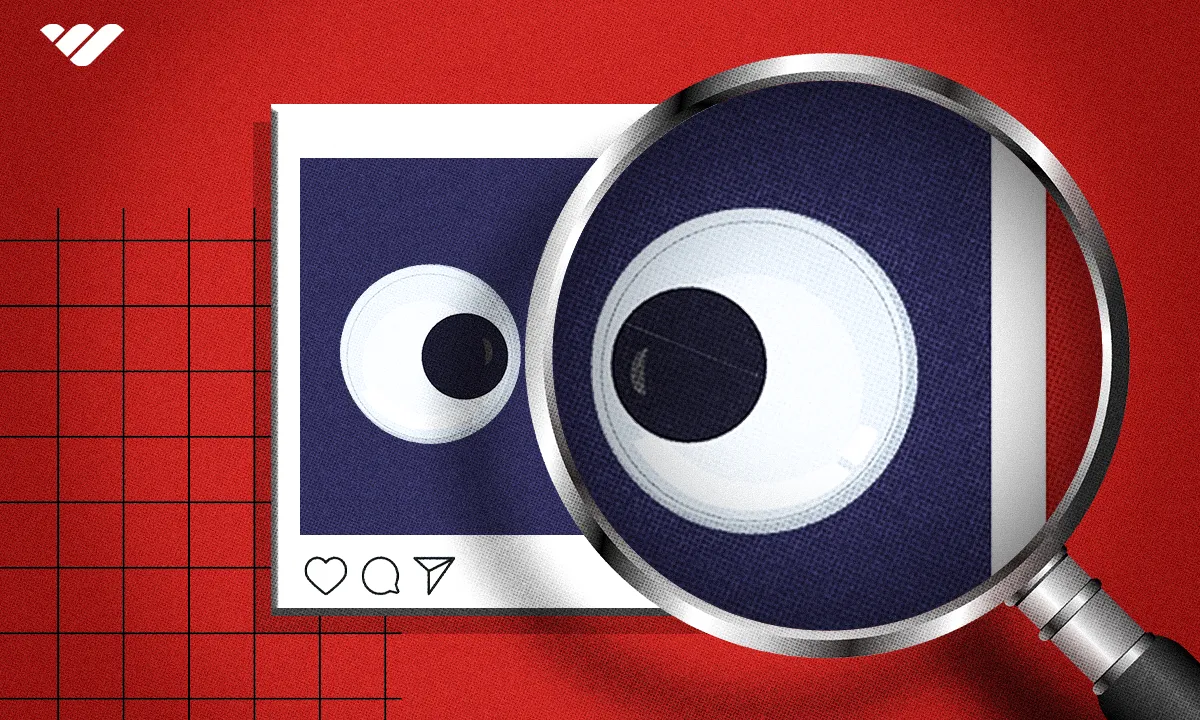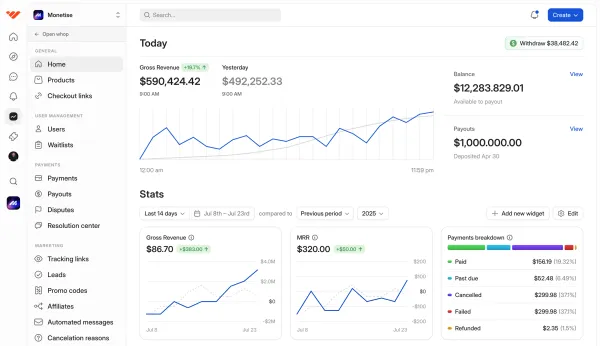Discover how to find the right influencers for your band in this comphrensive guide.
Key takeaways
- Influencer marketing surpassed $20 billion in 2024, proving its massive industry impact.
- Whop Content Rewards costs just $1.23 CPM compared to agencies charging up to $30.
- Nano influencers have highly engaged niche audiences despite smaller follower counts.
- Macro influencers provide broad demographic reach while maintaining niche credibility.
- Organic influencer discovery through hashtags and brand mentions costs nothing upfront.
Influencer marketing isn’t just a trend — it’s a multi-billion-dollar industry. In 2024 alone, it surpassed $20 billion, proving that influencers can deliver serious results for brands.
The opportunity is clear — but where do you start? With countless influencers across every social platform, finding the right match for your brand can feel overwhelming.
The good news? No matter your niche, reach, or budget, there’s an influencer out there who’s ready to help you connect with your audience and grow your business.
You just need to know where to look.
Why finding the right influencer matters
There was a time when a brand’s best way to reach buyers was through actors, sports stars and musicians—and let’s be honest, A-list celebs still live happily off their endorsements.
But now platforms like Instagram, YouTube, and TikTok have shown brands that everyday people can be just as influential (if not more influential) as celebrities.
Think about it—if someone wants to buy a new electric guitar, they might consider the brand or model that an icon like Metallica’s James Hetfield is known for using.
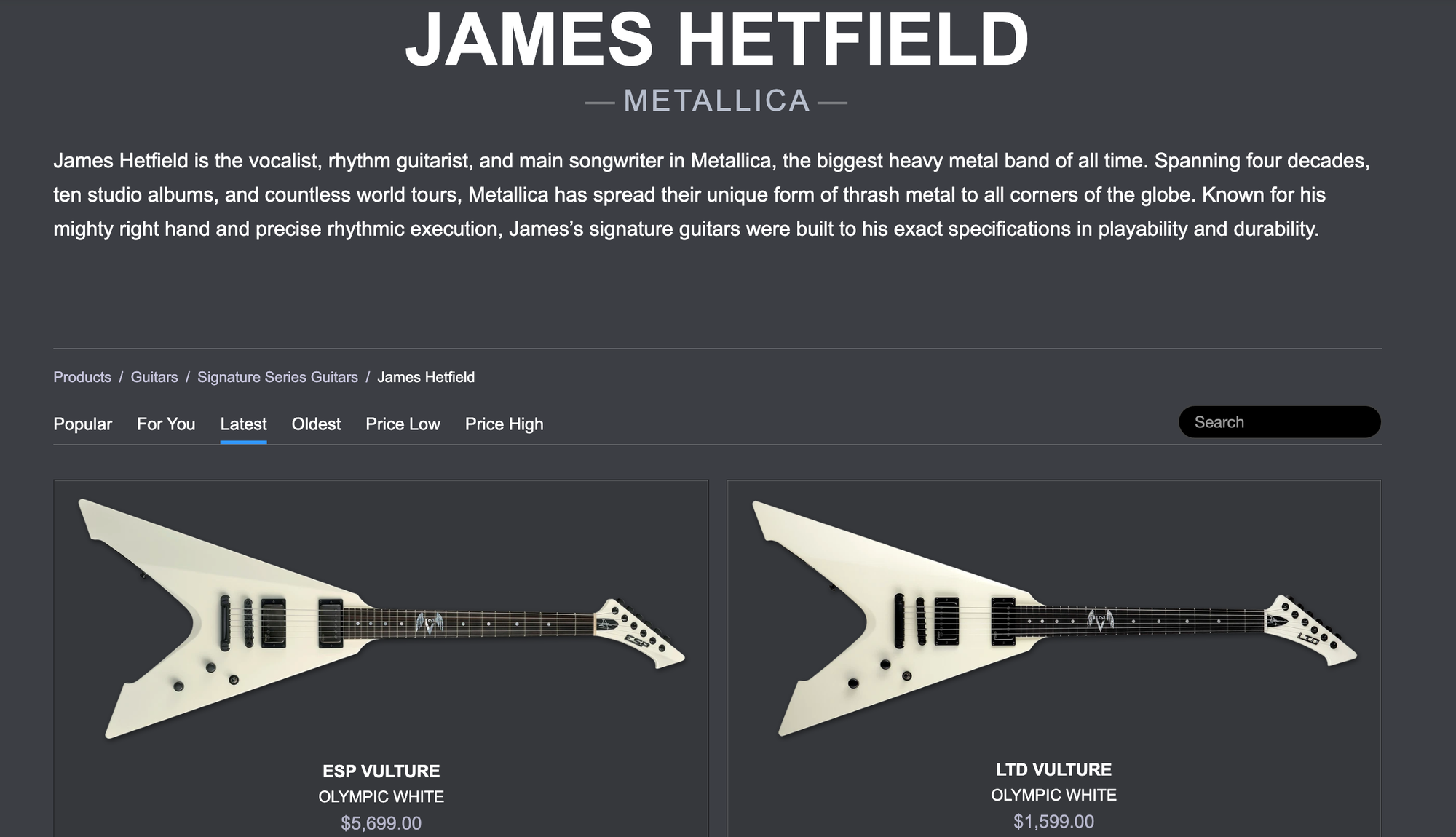
But, once they realize the pricetag, they might want to look elsewhere. So, where does this potential buyer go?
To social media, a guitar review blog, an established YouTuber in that niche.
So, while it make sense for a guitar brand to partner up with someone like Hetfield to build awareness, actual conversion comes from a review on an influential blog or influencer’s social channel. For example, this one:

And that’s why finding the right influencers matters. Whether you’re after reach or conversion, influencers have already built trust with your chosen audience—trust that you can leverage by working with them.
As an added bonus, most influencers are going to be far more affordable than celebrities. But that doesn’t mean that they’re all cheap—some come with a high price tag because they can bring you a significant number of sales.
So, the challenge for you as a brand is finding influencers with the right mix of trust, traffic, and conversation all while keeping within your budget.
The fastest, lowest cost way to find the right influencers: Whop Content Rewards
Whop is a social commerce platform that’s making some serious waves, and one of its hottest new features is called Content Rewards.
Using Whop Content Rewards, you can get your content shared online by anyone who joins your campaign. And, thanks to the pay-for-performance model in play, you’re only going to pay for content that actually gets views.
Don't just take our word for it—plenty of brands have found serious success with Content Rewards.

From a cost standpoint, campaigns like these perform 10x to 20x better than if you put your marketing budget in the hands of a traditional ad platform. Whop Content Rewards prices at just $1.23 in CPM terms, compared to agencies that might charge you up to $30 for the same content.
Plus, you’re only paying after the views come in. So, there’s no need to worry about the content you commission flopping or not getting the reach you were hoping for!
5 types of influencers to work with
1. UGC creators
A UGC (user-generated content) creator is someone who creates content for your brand by capturing video or taking images of your products.
As a rule, UGC creators produce authentic, relatable content in a style that’s lo-fi. This is almost the exact opposite of a high-budget expertly-created television ad.
Authenticity is everything in marketing, and UGC creators deliver it naturally. They’re everyday people sharing honest experiences with your products or the content you create.
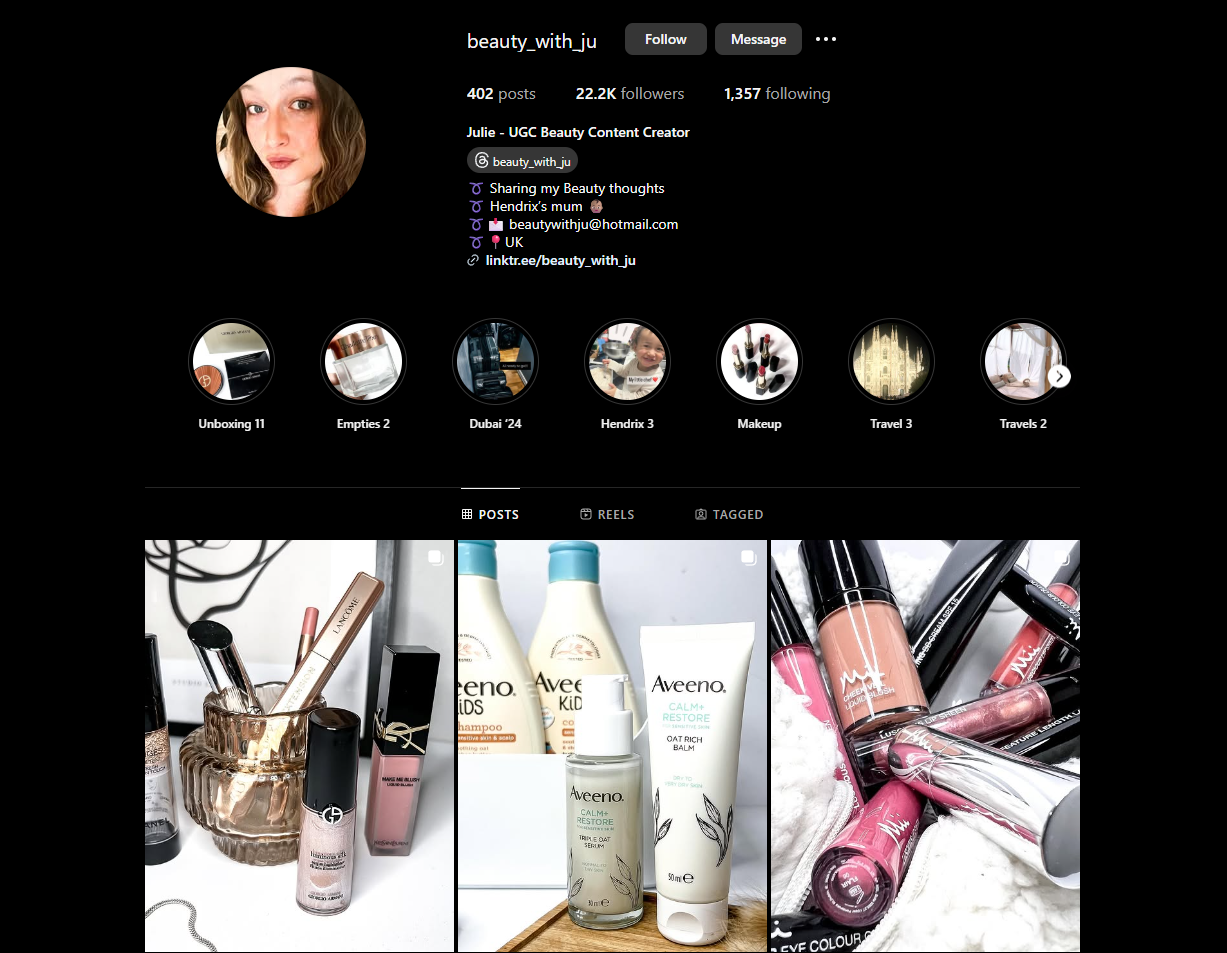
Julie, who runs the “beauty_with_ju” Instagram account is a great example of a UGC creator.
She’s grown a decent following, and there’s some serious skill on display when you scroll down her page. And of course, the products she’s paid to show are front and center.
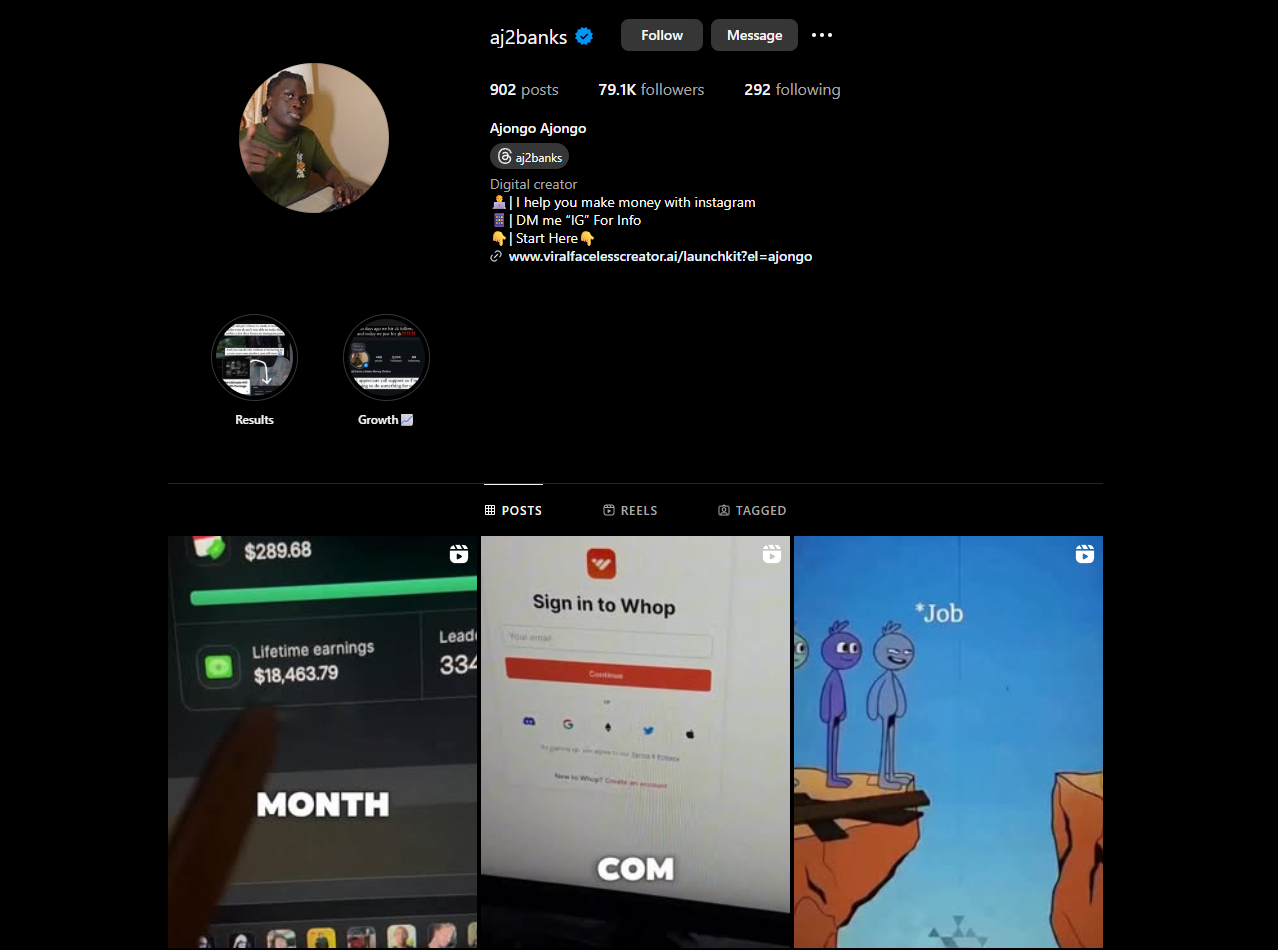
Aj Banks is another great example of a UGC creator. Take a look at his Instagram page.
That video on the right? He picked up four figures for it courtesy of Whop Content Rewards, which in turn means that the brand he created it for benefitted too—and we’re talking millions of views, here.
What’s the difference between influencer marketing and UGC?
Influencer marketing is a strategy where you partner up with influencers, paying them to promote your products or services to their audience. So, it's important that you know exactly who their audience is and how credible they are in your niche.
With UGC, creators may not even have an audience of their own. What matters is that they’re producing engaging, effective content that showcases your product and adds value.
A lot of the time, UGC creators aren’t even endorsing or promoting the product, they’re just showing it being used in a relatable, real-life setting.
Read more about how you can leverage the power of UGC
2. Nano influencers
Nano influencers are influencers with a follower count of a few thousand. As a rule, this isn’t enough to make a living on a single platform, so these creators are grafting hard.
For that reason, nano influencers are very happy to have a brand come on board. So, you’re going to be getting marketing support that is very motivated and happy to work.
Plus, nano influencers tend to have very niche, dedicated follower bases. The fact that they’ve built up an audience at all means that they’re doing something right, and you can take full advantage.
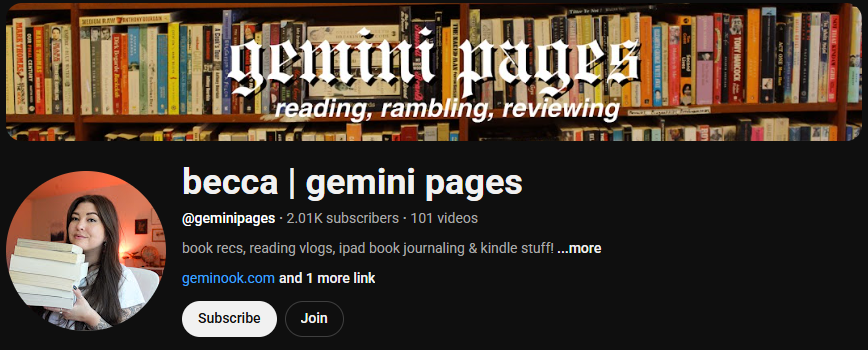
Becca’s channel Gemini Pages is an example of a niche nano influencer—in this case, books and reading. If you’re launching or want to sell a fiction ebook, a nano influencer with a profile like this one could be an outstanding match.
3. Micro influencers
Micro influencers usually charge a five-figure following all the way up to a hundred thousand. Micro influencer audiences are usually very invested in their niche.
Many brands work with micro influencers as they hit the sweet spot between reach and conversiona. Plus, cost plays a part here as well. While you’ll still pay a pretty penny, your budget won’t be as stretched as it would be with a macro or mega influencer.
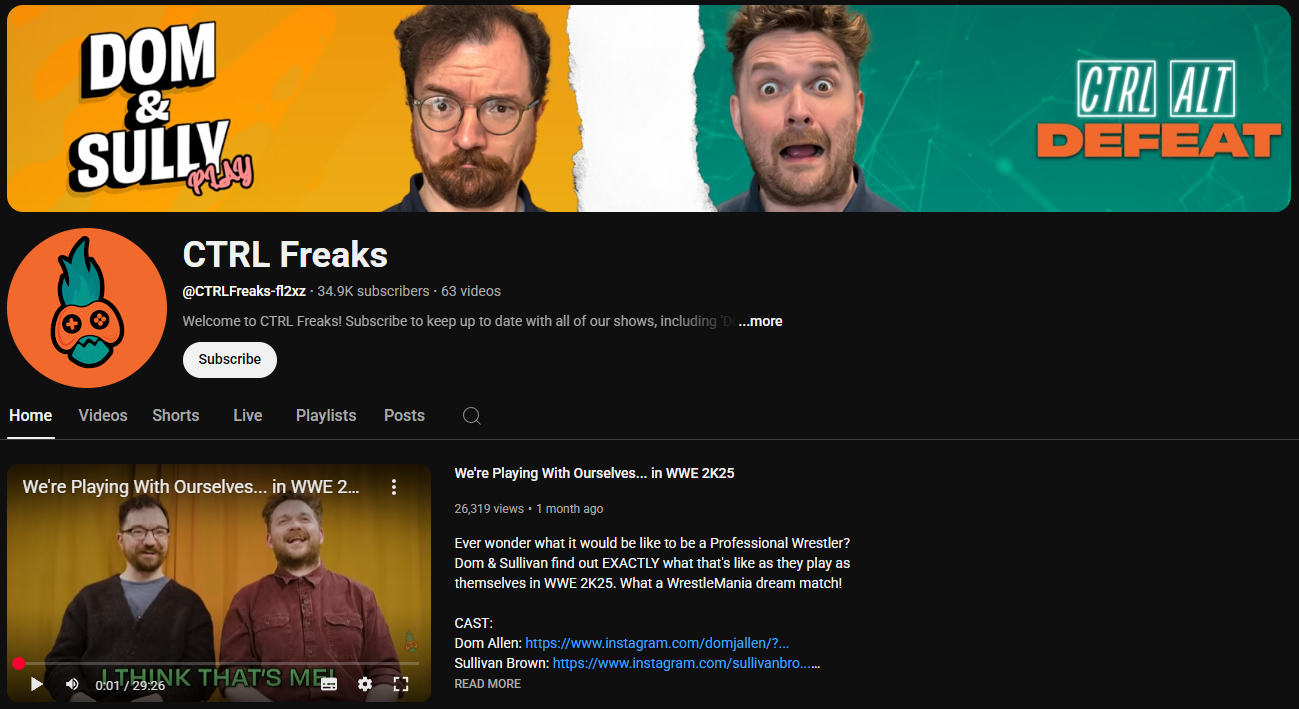
CTRL Freaks is a great example of a micro influencer channel with a mid-five-figure follower count and a very, very specific niche.
Dom (Dominic Allen) and Sully (Sullivan Brown) are professional actors and quite well known for in the world of board games and social deduction, but this channel of theirs is all about computer games—most of which the pair play together, bringing the hot seat back.
4. Macro influencers
Macro influencers generally sit at the top of the food chain as far as out-and-out influencers go. These influencers have gotten to the very top of their content niches and platforms and collected massive audiences along the way, from a few hundred thousand all the way to several million followers.
These influencers are often famous beyond their niche (who hasn’t heard of Mr. Beast) but as a rule, they gained their fame through the internet itself.
What’s useful about macro influencers is that, through them, you can target a pretty broad demographic, as well as the influencer's own niche.

This, for example, is the YouTube channel of one Peter Finch. You might not have heard of him, but anyone who’s ever watched some golf on YouTube definitely has. He’s not even the biggest brand in YouTube golf, but three quarters of a million subscribers makes him kind of a big deal.
Anyone choosing to partner with channels like Finch’s know that they’re getting into a very niche area, but that’s the point—you’re getting big exposure within your chosen niche while also linking up with someone who has tons of credibility in this area.
5. Mega influencers
Mega influencers are people that you might consider celebrities rather than influencers, and this gives them plenty of influence.
Unlike the other influencers on this list, mega influencers aren’t necessarily experts in any particular area, and so their audience can be extremely diverse. People of different ages and from all walks of life might be part of the same mega influencer’s audience, because they’re fans first and foremost.

Take Cristiano Ronaldo. One of the most high-profile footballing superstars in history and only now coming to the end of an illustrious two-decade-plus career, CR7 demands over $3 million per social media post reaching his global audience.
Even his rival and arguably the GOAT of the sport, Leo Messi, has a lower fee… though not by much. He as well as the likes of Selena Gomey, Kylie Jenner, Ariana Grande, and Dwayne “the Rock” Johnson will all charge you upwards of $2 million per post.
Each of these celebs can give you an incredible amount of exposure, although that’s the key word—if you want to get your brand out to the masses, this is the way to go. For conversion and really getting into your niche audience, you’ll want to choose a different category of influencer.
Where to find influencers the best influencer for your brand
So, how exactly should you go about finding the right influencers for your brand?
Finding influencers organically
One of the easiest ways to find influencers is organically. Look on the social platforms where they’re already creating and posting their content.
- Start by keeping an eye out for your brand mentions, or using some social media trackers to see exactly who’s talking about your own brand as well as your broader niche.
- Once you’ve identified the voices in the conversation, you can start figuring out what sort of influencer you want to link up with. Macro influencers are probably going to dominate the mentions, but you might find some really interesting micro or nano influencers on platforms like TikTok and Instagram.
- Search hashtags, like #skincare, to see who’s saying what, or just look for reviews of your own brand or those of your competitors to get started.
Remember to take full advantage of search platforms like Google since some solid use of keyword searches could help you find that perfect influencer match. If anything, it’ll lead you to the smartest influencers out there and the ones best at internet marketing and growing reach.
Searching online communities
Online communities are another excellent way to find influencers and content creators because, let’s face it, creators would be nothing without community.
We’re not just talking about each creator’s own community, though. There are tons of different communities in which you might find influencers.
For example, if you’re looking for a trading influencer? You’ll find plenty in these trading whops, from the macro and micro influencers running the whops to the nano influencers and UGC creators hanging out there too.
Discord servers based on specific niches are a good way to find influencers too. Take video games, for instance. Any game shy of a AAA will have a Discord server for the devs to communicate with the most keen sections of the audience, and any content creator halfway interested in creating content around that game will be there too.
The same goes for online forums revolving around different topics, and even different subreddits. Anywhere there’s an online community, you’re sure to find influencers and content creators.
Explore creator marketplaces
Given just how important influencer marketing is, it should be no surprise that there are apps and platforms that connect brands to influencers.
A lot of these platforms can be quite expensive, and that’s just for the services they offer. You’ll generally then have to pay content creators directly as well. So, cost is a big down-side for a lot of creator marketplaces.
However, these platforms offer you the chance to link up with influencers if you haven’t had any luck striking out on your own, so it’s a possibility worth investigating.
Whop Content Rewards
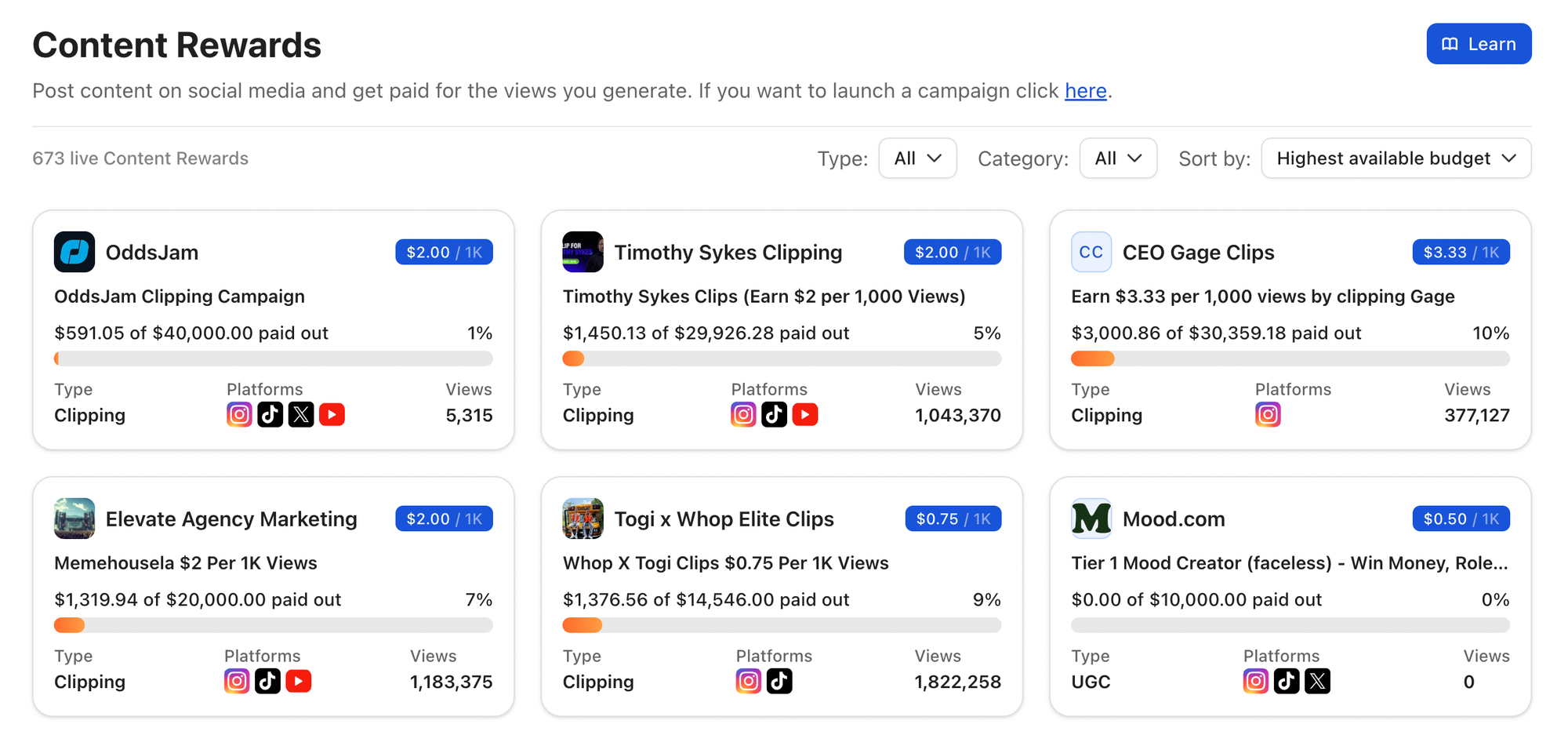
Whop Content Rewards is one of, if not the outright best way to find creators to make content for your brand—how can anyone say no to millions of views for just a few thousand dollars, and no effort at all spent on creating new content yourself?
Simply create your whop, then head to the Content Rewards section of the platform. Create a campaign there and then pick out the specifics that you’re looking at, such as your total budget and what sort of reward rate you want to offer per thousand views.
Watch as creators pile on, creating content for your brand that’s optimized for the platforms that you choose. Whether it’s Instagram, YouTube, Twitter, TikTok or anything else, you’ll find creators ready to work for you.
Tools you can use to find influencers
Looking for influencers? These tools make the search faster, smarter, and easier:
Hashtags and platform search
We’ve talked about this one already, but most platforms that influencers hang out on offer ways to search, like hashtags.
#fitness or #beauty for example will give you a quick view of what sort of content exists on a platform like Instagram, and that’s a good starting point.
YouTube is a great platform for longer form content, so look for influencers who like to do roundups and rankings. Those words alongside your niche or product description will immediately throw you a list of candidates, and a glance at follower or view counts will tell you what category of influencer you’re looking at.
Contests and referrals
Contests are a dime a dozen on different social media platforms, but guess what—they can be a seriously good way to not just gain a little reach, but also to trawl for potential influencers.
Generally, one of the contest terms is going to be for participants to share a link to your product page. All you need to do is scan for which accounts are most effective at bringing people in, and boom, you’ve got a handful of potential nano influencers at your fingertips.
Similarly, you can use referrals to your advantage too. Since you’re only paying people a small percentage of every sale, you’re not losing anything you wouldn’t otherwise have.
Competitor portfolios
If you’ve got direct or indirect competitors in and around your niche, check out their socials. Do they have a bunch of UGC posted, or are they working with certain influencers?
Well, guess what? It’s only the biggest influencer deals that tend to have exclusivity terms added to them. If your competitors are working with any influencers or creators you like the look of, there’s nothing stopping you from working with them too.
Vetting and shortlisting influencers
Now that you know how to get out there and find influencers to work with, it’s good to remember that the job’s not done. How do you make your final picks of whom to work with from a shortlist of influencers you like the look (or sound, or style) of?
Make sure your shortlisted influencers align with your brand
By far and away the most important thing when deciding to work with an influencer is to understand whether or not they align with your brand. That’s a deep question, since it looks at the influencer’s style and content, as well as the values they exhibit.
If you get it wrong, the collaboration won’t come across as genuine. This makes failure a very, very likely outcome, and neither yourself nor your chosen influencer wants that because there’s a chance that both brands will take a hit.
By and large, the link-up with your influencers should be natural. Your products should be ones that the influencers might actually use or recommend.
Remember those examples of influencers we mentioned earlier? Now, CR7 (Cristiano Ronaldo) is undoubtedly a massive draw for a many people, but sports fans can be very tribal. Could you imagine a brand that usually associates themselves with rival teams (Barcelona, for example) to the ones he played for (Manchester United, Real Madrid, etc) partnering up with him?

Critics of Cristiano also point to his behavior on the field, with the player having a reputation for doing his share of diving and play-acting on the field. As a brand, you’d be associating yourself with that side of CR7 too, at least with his detractors.
And if you want a slightly less controversial example, take the macro influencer we mentioned earlier, Peter Finch. He’s known among his audience for being a prodigious coffee-drinker. So, if you’re selling tea? Look elsewhere.
Doing your due diligence on your chosen influencers
What we mentioned about CR7 comes into play here too since he’s an extremely polarizing figure, and you’ll need to know that kind of thing about the influencers you’ve shortlisted.
This is something you’ll find out when you really do your due diligence on the influencers you’ve chosen. We want to go deeper than that or even basic data like follower counts.
The quality of the influencer’s content is going to really factor into your thinking at this stage, especially when it comes to nano and micro influencers. You don’t really want to associate yourself with creators who simply create cookie-cutter algorithm-friendly stuff - instead, look for quality photo and video, in-depth research, humor, and skill in expressing themselves.
It’s also very much worth diving into the influencer’s audience and trying to understand what’s going on there. A big follower count doesn’t necessarily mean a high engagement rate, and it’s the engagement that really counts.
Audience data will help you understand the potential reach of the campaign, and help you double down on your reasons for working with this person. Is their audience worth reaching, and can you sell to the people who’ll see the content? It’s all about reach and conversion.
And of course, is theirs the right audience for you? Just because the influencer’s big in your niche doesn’t mean they’ve got the right share of the market for your product or brand.
4 ways to work with influencers
Now that you’ve found and vetted your influencers, you’re ready to work with them. But what kind of promotions can you start with?
Here are some classic examples to set you on your way:
1. Tutorials and reviews
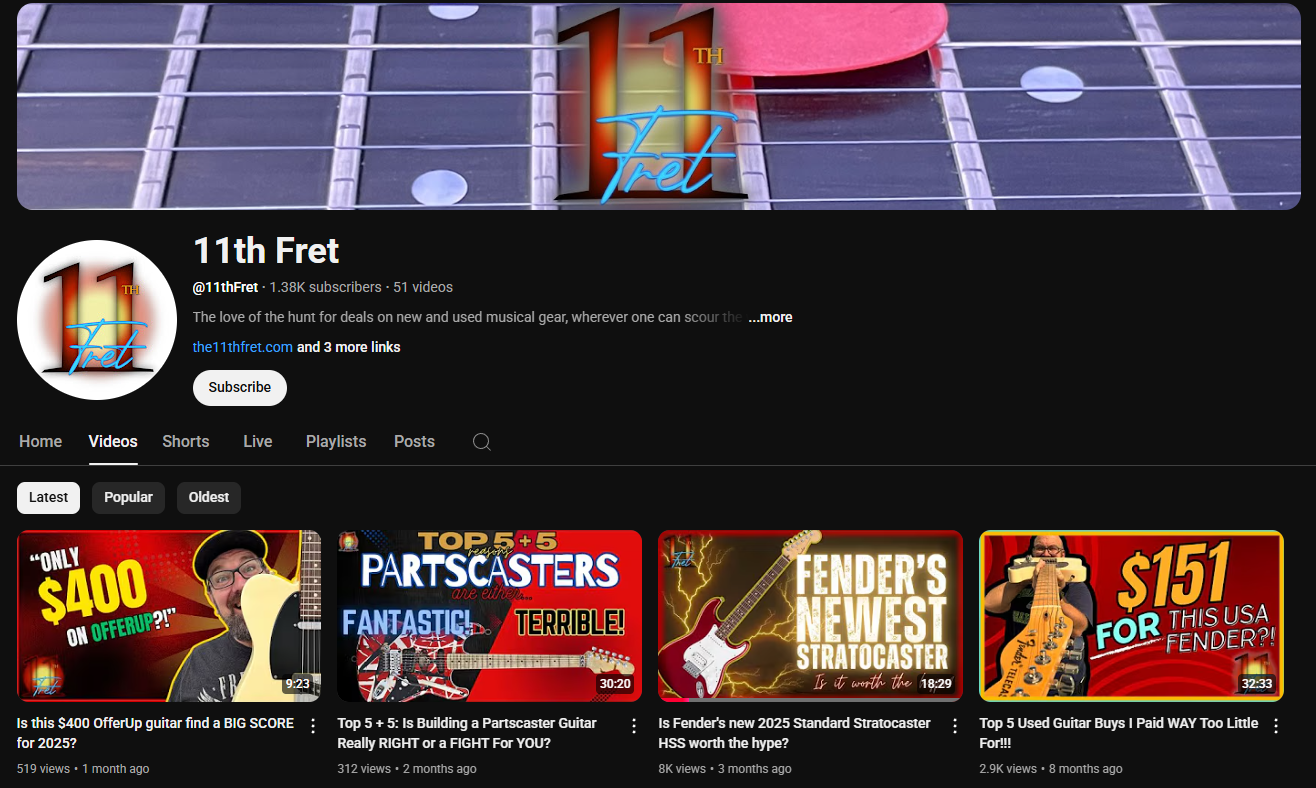
We mentioned guitars earlier, so how about 11th Fret? At the time of writing, this channel has just over a thousand subscribers, but there’s some real quality and expertise on display here when it comes to the subject matter—guitars.
As you can see, there’s a review of Fender’s latest Stratocaster on offer as well as several other guitar reviews if you scroll down the channel. Now, you may not get too much reach (8k views on that particular video) by asking for a review here, but there’s an argument for very decent conversion potential given how dedicated and engaged the audience is.
Generally speaking, reviews of your product are an excellent way to go given how they can make a viewer’s mind up on them, and tutorials can show off a product’s features and how it works in real life.
Plus, many content creators will happily create a review or even a tutorial for you in exchange for a single unit of that product for free, so it shouldn’t cost much to arrange!
2. Brand shares
Brand shares are a little less involved, because you’re asking for something more like to a shout-out than an in-depth review or tutorial. This sort of collaboration works especially well with a macro influencer, because all you really need is a few moments of screen or air time.
There’s definitely a balance to be struck here as you don’t want the content to be overly disrupted by the brand sharing—nothing’s quite as annoying as a podcaster cutting to his sponsor’s product five times in a twenty minute episode.
But, with the right balance of duration and frequency plus influencers who are good at spinning your brand or product mentions in a creative and entertaining way, these are a winner.

As the videos above show, some content creators have god-tier creativity—and they’re the ones you’re after.
Yes, it’s the influencer (Critical Role’s Sam Riegel) that those videos feature, but each play, clip, share, and rehash of his famous ads also places the sponsors front and centre within the content.
3. Giveaways
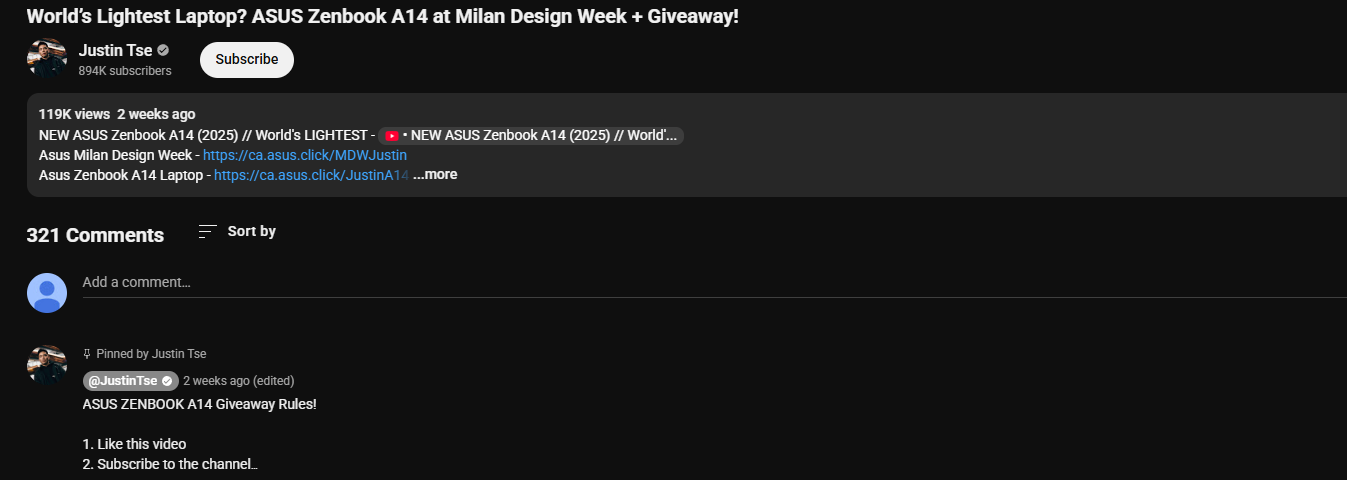
Does this kind of YouTube video title, description, and pinned comment format look familiar? That’s because practically every micro and macro influencer does giveaways at some point. And why not? Everyone wins.
You and the influencer you’re collaborating with can literally make up the rules when it comes to these online contests, and it’s a great way to add some numbers to your own social clout by stipulating that entrants subscribe to your brand or even join your mailing list.
You can fold other marketing tactics into giveaways too, like referrals to get people more entries or discount codes to encourage non-winners to buy your product.
There’s a reason giveaways are so common—they’re very, very effective.
4. UGC
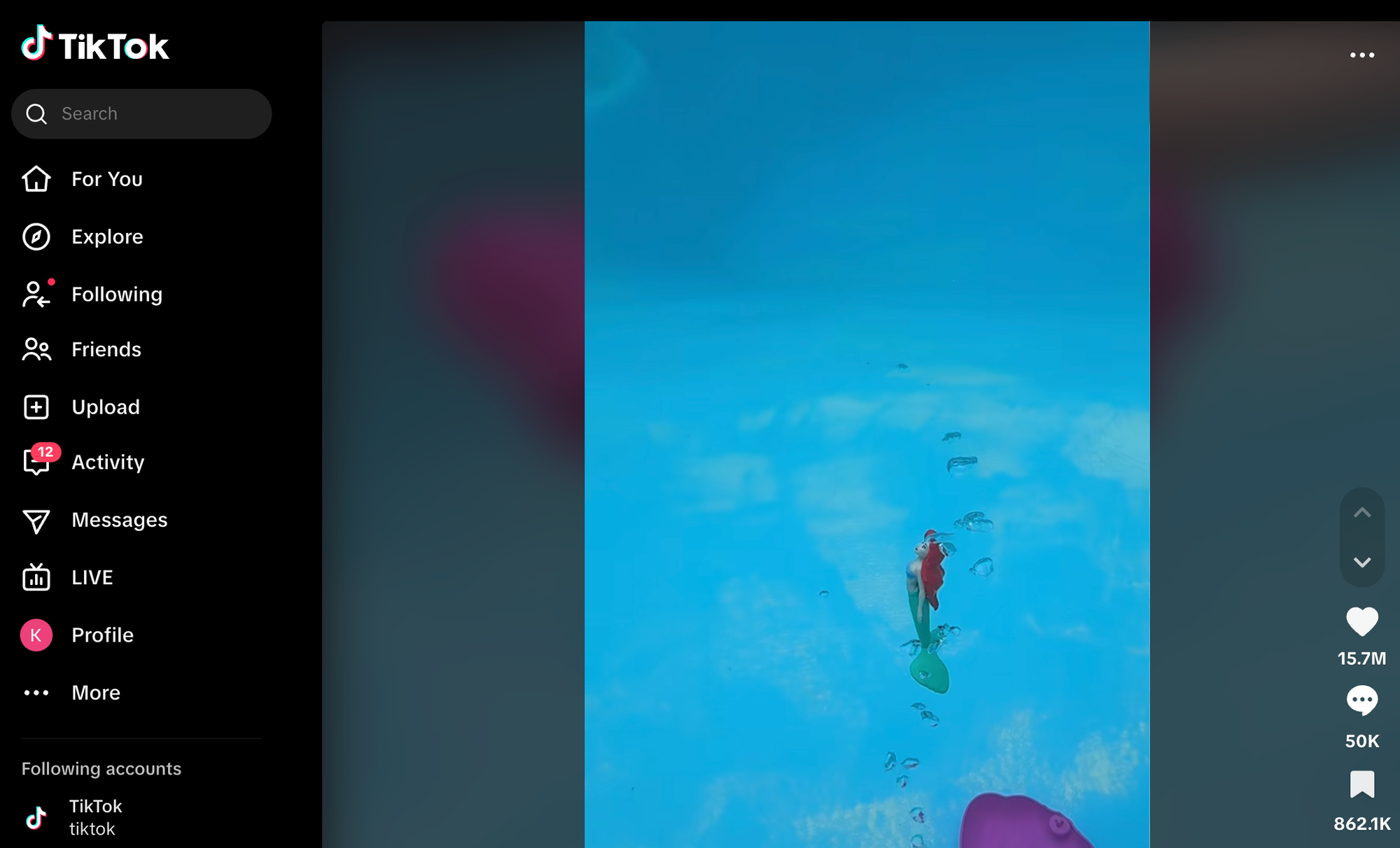
The video above says it all - that’s the little mermaid herself, Ariel, in toy form and being videotaped to full effect by a micro influencer on TikTok called Easten Watson.
It’s posted on her channel rather than Disney’s, but the fact that it’s picked up millions and millions of views speaks for itself.

All you’re would see in this video is six seconds of PGA Tour pro (and one half of the macro influencer channel Bryan Bros) Wesley Bryan hitting a golf shot in slow motion.
That’s it. Takomo Golf paid him to do it, and posted it on their TikTok channel. Associating with an influencer like that (who also has significant street cred in his niche) is a big win for the brand.
Find influencers easily with Whop Content Rewards
Whop Content Rewards combines the best of high-end UGC platforms—without the sky-high monthly fees—with on-demand access to creators. Whop Content Rewards is the easiest way to find and work with influencers.
Whether you’re after nano creators, UGC talent with small followings, or micro and macro influencers ready to scale your reach, you only pay for performance.
No subscriptions, no upfront costs, no flopping content—you’re paying purely for campaign performance. Just create your whop and start connecting with the right influencers today.


